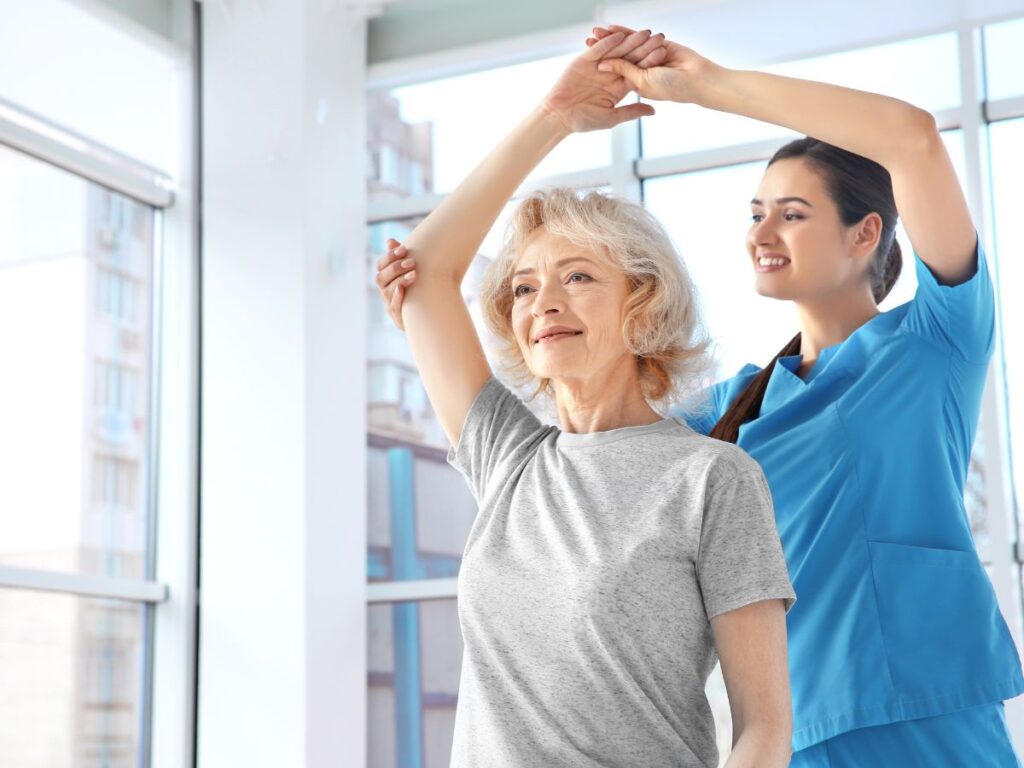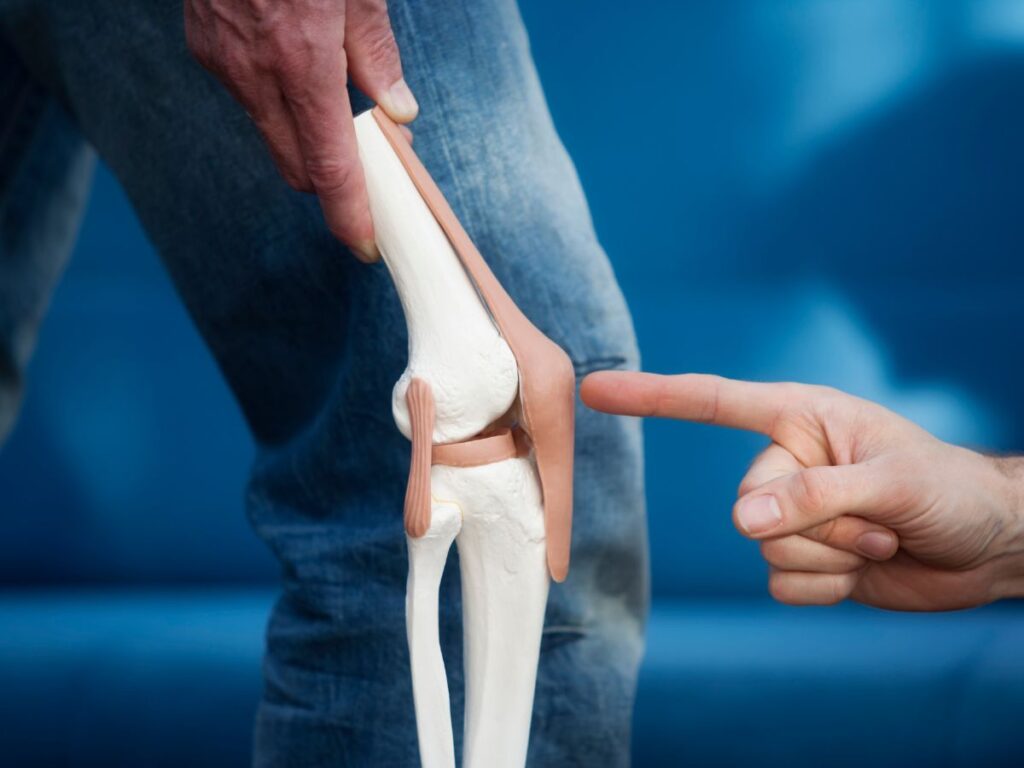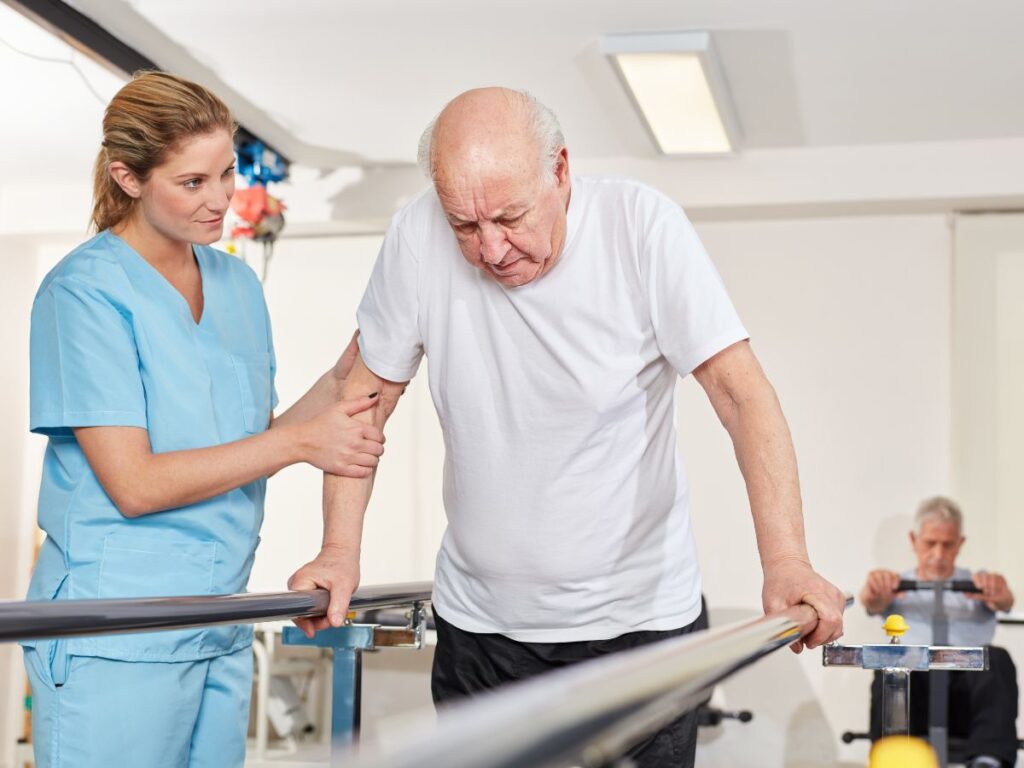Why Manual Therapy Eases Senior Stiffness
As the body ages, joints can lose lubrication, fascia tightens, and muscles become less pliable—amplifying the sensation of stiffness in everyday motions. While some seniors accept this rigidity as part of aging, manual therapy offers a hands-on solution. By applying gentle pressure, stretching muscle fibers, and mobilizing restricted tissues, therapists loosen stubborn knots that hamper range-of-motion. Dr. Elham’s alignment steps complement this by removing skeletal misalignments that reinforce tightness. Freed from the bracing that stiff tissues create, older adults rediscover smoother flexibility in tasks like bending down, rotating the neck, or reaching overhead. Ultimately, manual therapy transforms the presumed inevitability of “old age stiffness” into a manageable condition, giving seniors the freedom to move with greater ease and reduced discomfort.
What Contributes to Age-Related Rigidity
Decades of postural habits, unaddressed minor injuries, and joint wear can gradually limit motion. Collagen changes in connective tissue make muscles less elastic. Inactivity hastens this process, allowing scar tissue to accumulate around joints. Chronic inflammation—like mild arthritis—triggers protective muscle tightening. Manual therapy tackles these culprits by applying controlled pressure that breaks up adhesions and fosters better circulation. Dr. Elham’s chiropractic approach clarifies if a subluxated spine or pelvis intensifies tension in specific muscle groups. Together, they unravel the layers of tightness, replacing it with a sense of looseness that fosters more comfortable daily motion, from stepping into the shower to twisting the torso when backing out a car.
Core Methods of Manual Therapy
While each practitioner tailors techniques to the senior’s condition, common elements include:
- Myofascial Release: Sustained, gentle pressure on fascia to ease knots and restore tissue glide.
- Kneading and Effleurage: Classic massage strokes that enhance blood flow and warm stiff muscles, reducing pain.
- Joint Mobilizations: Subtle motions that free locked joint capsules, improving arthritic or post-injury range-of-motion.
- Trigger-Point Work: Targeted pressure on hypersensitive muscle spots that refer pain or reduce elasticity.
- Subluxation Alignment: Dr. Elham’s mild manipulations ensuring no vertebral misalignment perpetuates muscular bracing.
By weaving together these techniques, seniors gradually unravel built-up tension, paving the way for fluid, low-pain movements in everyday tasks.
Dr. Elham’s Role in Unlocking Stiffness
Manual therapy on stiff muscles can be undercut if skeletal subluxations linger, forcing muscles to remain tense. Dr. Elham checks the spine—particularly the lumbar or cervical regions—for misalignments limiting an older adult’s capacity to bend or rotate comfortably. Gentle manipulations relieve nerve compression or abnormal disc stress. This synergy allows the manual therapist’s soft-tissue work to hold, as muscles no longer fight poor skeletal positioning. Over time, seniors find their posture adjusts: shoulders level out, hips regain symmetry, and the muscle tightness around arthritic joints or old scar tissue softens for lasting relief, not just a fleeting moment of looseness post-session.
Why Engage Manual Therapy Early
Some older adults wait until stiffness severely impacts standing, walking, or self-care before seeking help. But mild tightness, left unaddressed, can escalate into constant pain or extreme motion limits. Early, regular sessions thwart adhesions from hardening and strengthen muscle resilience. Dr. Elham’s alignments also avert degenerative changes if partial subluxations remain unchecked. By adopting manual therapy at the first hint of age-related rigidity—like mild morning stiffness—seniors keep the issue manageable, preserving an agile stride and confident posture. This prevents deeper fatigue or frustration that can accompany feeling “locked up” in daily tasks, forging a more active aging process overall.
Maintaining Gains Between Treatments
Manual therapy’s looseness can slip away if seniors revert to inactivity or poor posture. Therapists often provide simple stretch routines—like slow neck rotations, shoulder rolls, or low-back twists—to be done daily. Dr. Elham may advise quick posture checks—like keeping the head over the spine—so stiff areas don’t revert under forward-head slump. Using heat packs before movement can enhance tissue elasticity, while brief icing can calm inflammation if a joint aches. Over weeks, these micro-habits ingrain therapy’s benefits into daily living, letting older adults tackle normal tasks with minimal stiffness re-emerging, reinforcing that gentle, supple feeling in muscles and joints.
Overcoming Everyday Task Hurdles
Age-related rigidity can complicate bending to tie shoes, looking over a shoulder, or raising arms to reach a cabinet. Manual therapy directly counters these constraints by releasing the tightness that blocks motion. Practitioners may replicate daily movements—like simulating overhead reach—while massaging relevant muscle groups. Dr. Elham’s alignment ensures no pelvic tilt restricts forward bending. As seniors master new fluidity, they rediscover independence in chores, personal grooming, or mild hobbies. Freed from that stiff “pull” during each bend or turn, older adults navigate their household and social interactions more effortlessly, fueling a sense of accomplishment and maintaining an active role in personal or family events.
The Cost of Ignoring Age-Related Stiffness
Unchecked rigidity can accelerate joint damage, with tight muscles pulling unevenly on arthritic segments. Mobility shrinks as seniors avoid painful moves, hastening muscle atrophy and posture deterioration. Sleep may suffer if turning in bed pinches stiff spots. Over time, frustration builds, and daily tasks turn arduous, risking reliance on canes or more advanced care. By contrast, routine manual therapy and Dr. Elham’s mild alignments ensure each joint moves freely, halting advanced degenerative changes. Seniors remain self-reliant in chores, greet each day with a body that flexes and extends without relentless tension, and maintain mental well-being unburdened by never-ending stiffness.
A Typical Manual Therapy Session
Therapists generally assess the senior’s stiff zones—like the lower back, shoulders, or hips. Gentle heat might be applied initially, warming tissues for deeper release. Using myofascial or kneading techniques, they methodically loosen knots, checking for pain feedback. Dr. Elham might adjust the spine or pelvis if subluxations appear. Then, guided stretching—like a controlled hamstring stretch or overhead arm raise—reinforces the newly freed range. If arthritic joint swelling emerges, icing post-session prevents flare-ups. Over multiple visits, seniors note that each session ratchets down the stiffness, culminating in a fluid range-of-motion that handles daily twists or bends easily. Freed from tension, they resume mild exercise or routine tasks with comfort and clarity.
A More Supple Future
Manual therapy for age-related stiffness rescues seniors from the daily drag of rigid muscles and aching joints. By methodically releasing knots, softening fascia, and capitalizing on Dr. Elham’s alignment expertise, older adults enjoy renewed mobility previously lost to the slow creep of time. Freed from tension’s grip, they can embrace simple joys: picking up items from the floor, stretching arms overhead, or turning the head to greet a friend—minus that constricting tightness or fear of pain. Over consistent sessions, the body re-learns how to move gracefully, preserving independence and well-being as age continues forward, ensuring later years sparkle with capable, confident motion.






